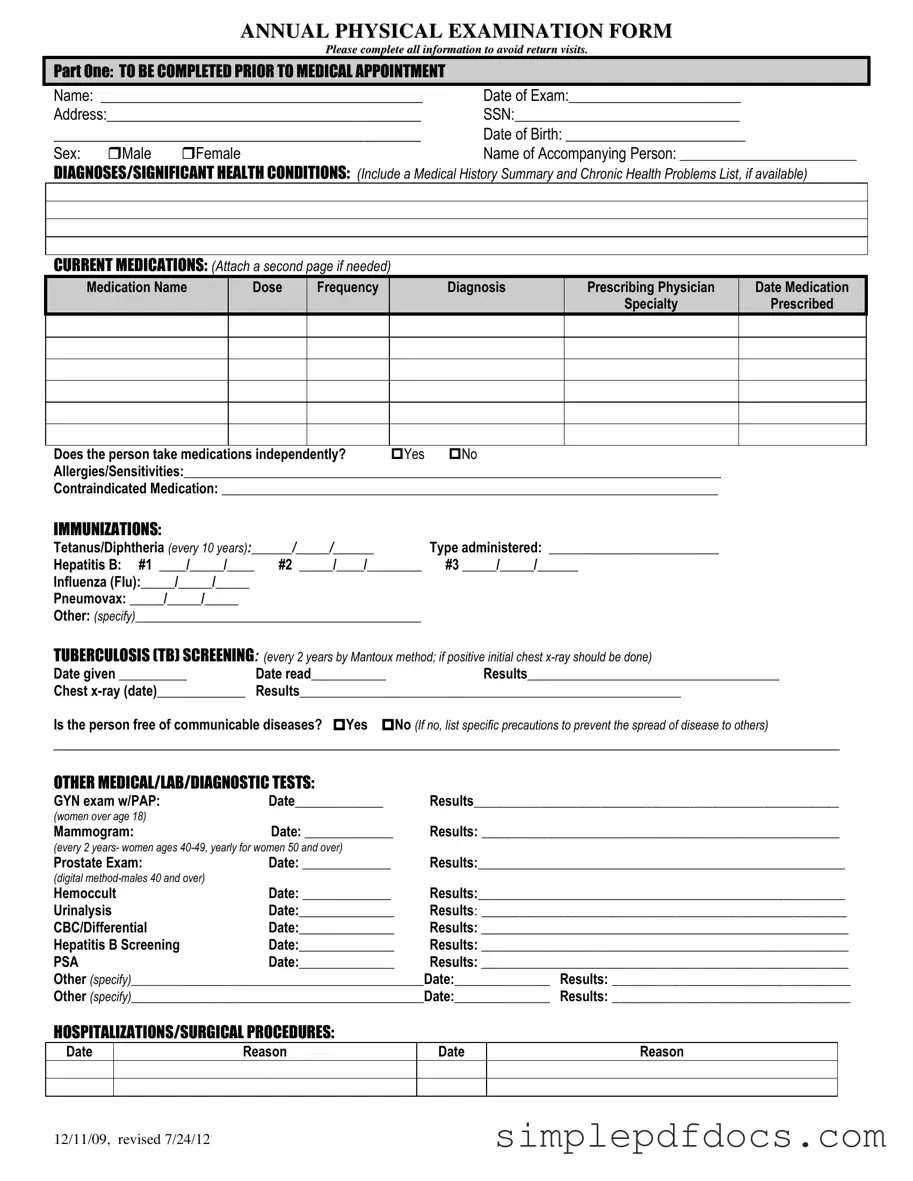The Annual Physical Examination form is an essential tool for both patients and healthcare providers, ensuring that all necessary health information is collected before a medical appointment. This comprehensive document is divided into two main parts. The first part requires patients to provide personal details, including their name, date of birth, and medical history. It also asks for information about current medications, allergies, and immunizations, which helps the healthcare provider assess any potential risks and tailor the examination accordingly. The second part focuses on the general physical examination, where vital signs such as blood pressure and weight are recorded. Additionally, it includes an evaluation of various body systems, allowing for a thorough assessment of the individual's health. By completing this form accurately and thoroughly, patients can help minimize the need for return visits and ensure that their healthcare provider has all the information needed for a successful examination.
